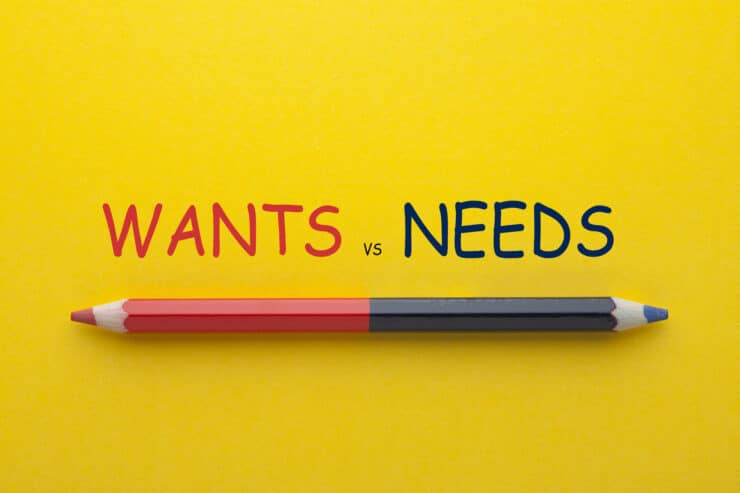When creating a budget, it’s critical to think of needs vs wants. Needs are things that are necessary for survival — think food and shelter. Wants are things you decide to buy, but don’t actually need — think subscription services and new clothes. Here’s a helpful guide for understanding the difference between needs and wants.
Examples of Needs
Needs (essential) are expenses that are necessary for everyday life, like:
- Rent or mortgage
- Health insurance
- Car insurance and payments
- Utility bills
- Savings
- Groceries
Examples of Wants
Wants (non-essential) are expenses that aren’t vital to living, such as:
- Streaming services
- Vacations
- New clothes
- Entertainment
- Electronics
- Dining out
Action Steps
Now that you have some examples of needs and wants:
- Go through your budget and separate your expenses into those two categories.
- This will help you see just how much of your spending is going to each.
- If you see that you’re spending too much on wants, try using the 50/30/20 rule.
What is the 50/30/20 Rule?
The 50/30/20 rule is simple: break down your budget into the following 3 categories:
- 50% for needs
- 30% for wants
- 20% for savings
Using this rule will help you get your budget in order and keep your wanted spending below your needed spending.
Do One Thing: Go through your budget and make sure your wants spending isn’t outweighing your needs spending. If it is, try the 50/30/20 rule to get things right.






